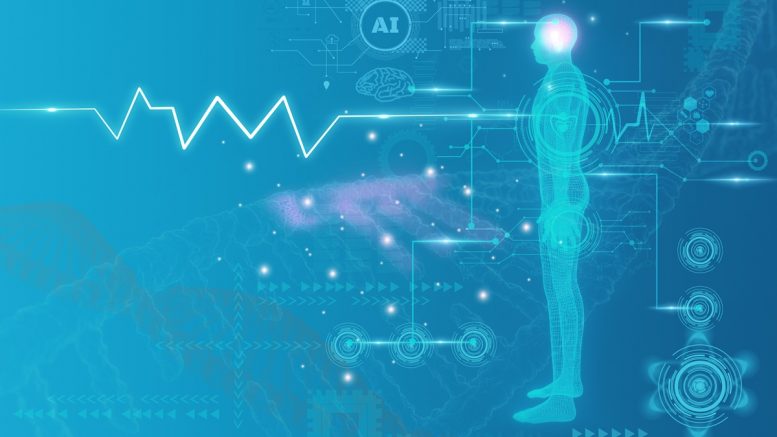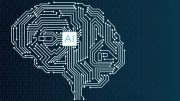While no AI system is medically licensed, artificial intelligence and graph technology are already becoming essential tools in patient care, notes database expert Dominik Tomicevic
In the US, nearly one in six adults is living with diabetes—95% of them with type 2. Around the world, the disease affects more than half a billion people. Alzheimer’s disease is another mounting challenge, with 6.9 million Americans over 65 currently diagnosed—a figure expected to double by 2060 and climb to 139 million globally by 2050.
To counter these rising numbers, billions of dollars are being poured into research and treatment—the diabetes drug market alone surpassed $88 billion in 2024. Now, a powerful new force has joined the fight: Artificial Intelligence.
But the real breakthrough isn’t AI working in isolation. It’s how healthcare providers and medical researchers are combining AI with advanced software tools and database technologies—especially knowledge graphs and GraphRAG (Graph Retrieval-Augmented Generation). Together, these innovations are poised to revolutionise how AI delivers accurate, contextually relevant insights; amplifying its potential far beyond what AI alone could achieve.
Reimagining diabetes care for real-world patients
One of the most compelling examples of this innovation comes from US-based telemedicine startup Precina Health, which is pioneering a new approach to supporting patients living with Type 2 diabetes.
Managing this condition is complex, often requiring medication, lifestyle changes, and ongoing monitoring. For older adults in rural areas or patients struggling with technology, getting that support can be an uphill battle, so Precina’s model integrates daily support, medication management, lifestyle coaching, and virtual consultations into one seamless experience.
It’s all quite radical. “We’ve deconstructed the traditional approach to managing Type 2 diabetes and instead built a model that’s designed to work for every single patient,” says Josiah Bryan, the company’s CTO and lead AI researcher. “We’re taking a holistic view, factoring in everything to help each individual more effectively.”
But Bryan is clear: technology is the enabler, not the decision-maker. “I’m not legally allowed to practice medicine. And neither is my technology,” he stresses. “When we say we’re optimizing insulin management, that doesn’t mean the AI is doing some sort of linear regression or tweaking the prescription up and down.” Instead, AI acts as a powerful assistant to the doctor, helping clinicians deliver the ‘high-touch’ care necessary for long-term Type 2 diabetes management.
Using the AI machine to help the human doctor
Precina’s flagship system, the Precina Provider-Patient CoPilot (P3C), is a virtual assistant that joins virtual consultations, providing real-time prompts and personalised insights over video or voice. It offers far more than standard medical guidance, as it taps into the patient’s holistic health journey; in other words, P3C doesn’t just check blood sugar levels; it asks about home life, emotional wellbeing, even pets—because those details can significantly affect health outcomes.
Bryan’s team built an advanced tech stack, combining a relational database (MySQL), a custom LLM based on GPT-4o mini, a knowledge graph queried with Cypher, vector search techniques, and classical search algorithms like Monte Carlo tree search.
Central to P3C’s success is a customised knowledge graph, serving as the organising layer for everything from personal patient history to the latest research. When a clinician speaks with a patient, a real-time transcription runs through GraphRAG (retrieval-augmented generation), cross-referencing past conversations, medical records, and thousands of medical documents. This allows the system to surface the most relevant, personalised insights instantly.
He adds, “When a provider and a patient chat in Google Meet, a plugin extracts the audio, immediately transcribes it and is constantly extracting anything useful in real time by performing a GraphRAG search against the things you’ve talked about with them, their individual medical files, and thousands of pages of documentation that’s been indexed and sorted to give medical advice.”
Bryan sums it up: “That’s implemented with graph technology as a way to give a holistic view of where their patient is at in not just their medical journey but their emotional state.”
Precina’s innovations don’t stop with diabetes; his team has also created a voice-driven AI assistant accessible via a rotary phone, designed to help older adults and Alzheimer’s patients stay connected without needing modern devices.
Harnessing the power of AI
The Alzheimer’s community is also starting to see the benefits of knowledge graph-powered AI. At Cedars-Sinai Medical Center—one of the largest nonprofit academic medical centers in the U.S.—researchers are using graph technology to uncover new insights into the disease, with the goal of better understanding, and ultimately finding more effective ways to treat, Alzheimer’s.
Its initiative, the Alzheimer’s Disease Knowledge Base (AlzKB), gathers insights from more than 20 knowledge sources: genes, genetic links, drugs, biological pathways, symptoms, and more. Built on a graph database platform, it contains 234,000 nodes and 1.67 million relationships, organised around a detailed Alzheimer’s ontology.
From coin tosses to breakthrough
According to Jason Moore from Cedars-Sinai’s Department of Computational Biomedicine, when used out of the box, generative AI models like ChatGPT are no better than flipping a coin when it comes to complex biological reasoning. For sure, ChatGPT can answer questions about Alzheimer’s or specific genes, but it cannot understand and reason across the dense web of relationships that underpin real medical insights.
To fix that, Cedars-Sinai integrated knowledge graphs with GraphRAG and the emerging concept of ‘Graph of Thoughts’ from Hugging Face. Now, users can query AlzKB without needing to learn specialist database languages like Cypher. Even better, thanks to the knowledge graph, the AI doesn’t just pull random facts, but reasons across the entire Alzheimer’s ecosystem to uncover new patterns and connections.
“Graph gives us a higher-level synthesis of the knowledge than we would get in any other way,” Moore explains. In other words, the knowledge graph doesn’t just store facts, but helps us reason across them, turning fragments into genuine insights.
Searching in the dark
The Cedars-Sinai team is particularly excited about using these tools to uncover hidden risk factors and potential treatments. While much of the research community focuses on the roughly 100 known Alzheimer’s-related genes, Moore is committed to pushing beyond the obvious. “Lots of people are looking under the lamp post of a known gene,” he says. “But what I’m interested in are the novel discoveries ‘over there’ in the ‘dark’—the insights that aren’t yet illuminated by existing research.” By combining AI and knowledge graphs, the team hopes to reveal patterns and connections that might otherwise stay buried.
Early results are promising. Machine learning models, informed by AlzKB, are surfacing previously unrecognised genetic contributors to Alzheimer’s, and even suggesting that common medications like Temazepam or Ibuprofen might be repurposed to treat certain symptoms more effectively.
Promising pathways
For Moore, “I think we’ve shown how we can tailor large language models and accurately query a big Alzheimer’s database, plus demonstrated how we can use the knowledge graph to inform machine learning to give us new ideas for treating this disease.”
The next step is to use knowledge graphs and machine learning pipelines to accelerate discoveries and scale this approach. Soon, researchers will be able to enter natural language prompts like, “Show me the genes linked to this drug and disease,” and the AI will run algorithms, highlight key features, and deliver clear, actionable insights. This could significantly speed up research efforts—and, ultimately, help bring new treatments to patients faster.
Across both these examples—and many others—what’s clear is that developers are increasingly turning to graphs and GraphRAG to unlock the true potential of big medical data and AI. With these tools, researchers and clinicians are no longer confined to searching under the brightest lamp posts where everyone else is already looking. Instead, they can explore the unknown, surfacing hidden relationships and overlooked treatments that could drive real medical breakthroughs.
In medicine, as in life, some of the most powerful answers aren’t found in the obvious, but in the questions no one thought to ask. With this new approach, are we finally learning how to ask them?
Dominik Tomicevic is the CEO of knowledge graph leader Memgraph





